1940 Nickel Coin Value: How Much Is It Worth?
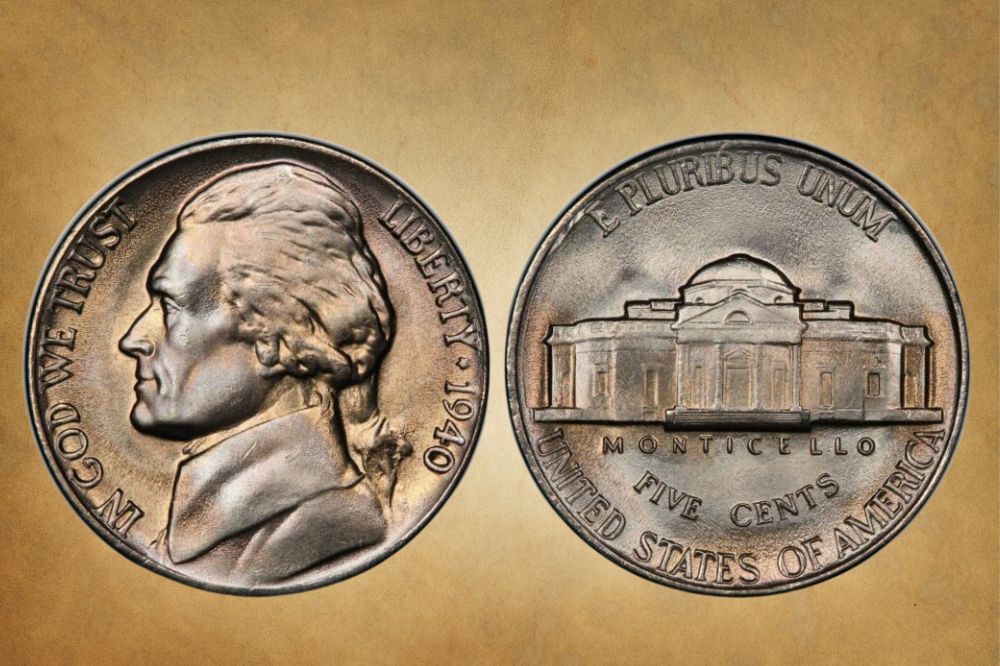
Jefferson nickels are 5-cent coins first minted in 1938 to replace existing Buffalo nickels. They got their name after former American President Thomas Jefferson’s bust on the coin obverse.
The 1940 Jefferson nickel value depends on the mint mark, grade, and condition. Plus, some varieties and errors often significantly increase this coin type’s price.
1940 nickel value chart |
|||
| Condition | 1940 No Mint mark nickel | 1940 D nickel | 1940 S nickel |
| Good | $0.1 | $0.1 | $0.1 |
| Very good | $0.2 | $0.2 | $0.2 |
| Fine | $0.22 | $0.22 | $0.22 |
| Very fine | $0.3 | $0.4 | $0.4 |
| Extra fine | $0.45 | $0.6 | $0.6 |
| AU | $0.85 | $1.13 | $1.13 |
| Mint state 60 | $1.13 | $2.3 | $2.55 |
| Mint state 65 | $111 | $17 | $17 |
| Proof 63 | $140 | / | / |
1940 Nickel Value Guides
The US Mint minted 259,743,316 Jefferson nickels the first war year at three mints. Like other coins minted from 1938 to 1942, these specimens belong to the first era. Since they are over eighty years old, they are collectible nowadays.
1940 No Mint mark nickel value
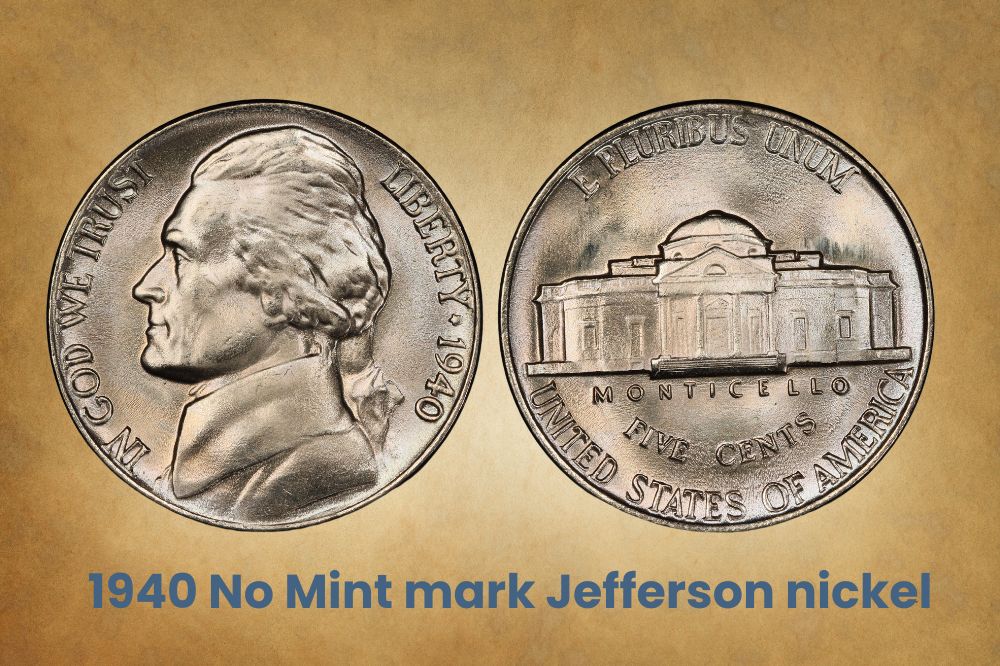
The Philadelphia mint produced over 176 million Jefferson nickels in 1940, so it is not difficult to find them on the current coin market. However, their value can significantly vary, depending on preservation level and whether they bear the Full Steps marks.
The average value for a fine-graded specimen is 10 cents, while an uncirculated piece with an MS 65 rating can reach $11. Still, some coins appearing at auctions can be surprisingly costly. For instance, the 1940 Jefferson nickel graded MS 68 was sold at Legend Rare Coin Auctions in 2021 for $558.
1940 proof nickel value
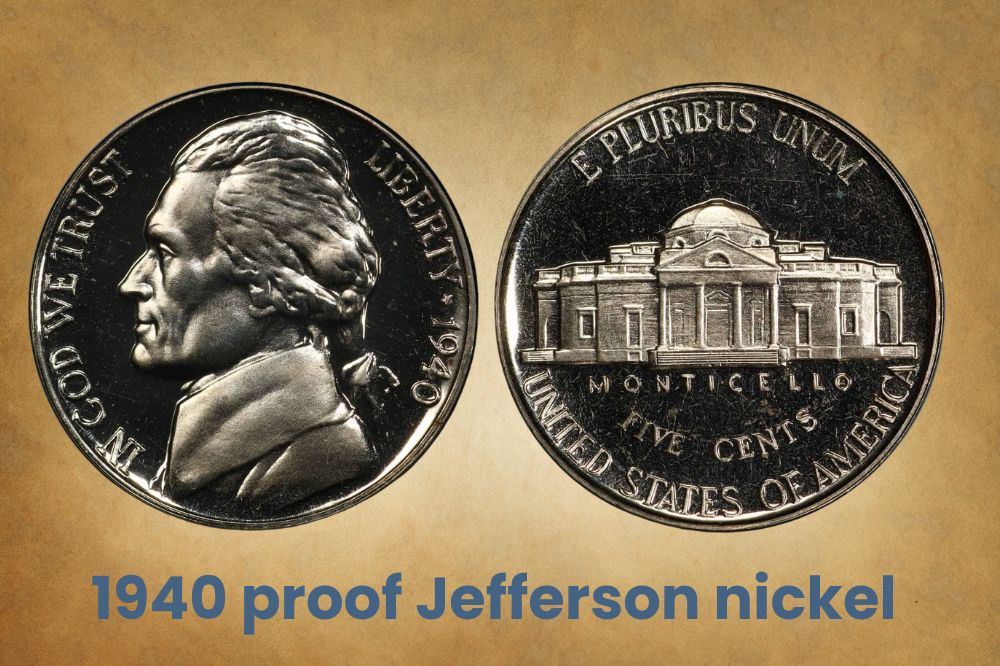
The Philadelphia mint struck only 14,158 proof Jefferson nickels in 1940, and this small number affected their value on the coin market. You can buy a proof coin in average condition for as little as $18, but high-preserved pieces can be pricey and cost up to $8,000.
1940 proof Jefferson nickel value |
|||
| Condition | 1940 No Mint mark nickel | 1940 CAM No Mint mark nickel | 1940 DCAM No Mint mark nickel |
| PR 60 | $18 | / | $25 |
| PR 61 | $20 | / | $30 |
| PR 62 | $25 | / | $35 |
| PR 63 | $35 | / | $55 |
| PR 64 | $70 | $275 | $110 |
| PR 65 | $80 | $500 | $195 |
| PR 66 | $110 | $900 | $375 |
| PR 67 | $300 | / | $1,000 |
| PR 68 | $4,000 to $4,500 | / | $8,000 |
As always, some specimens can reach excellent prices. For instance, one collector paid $18,400 for the 1940 PR 68 Jefferson nickel at an auction in 2005.
1940 D nickel value
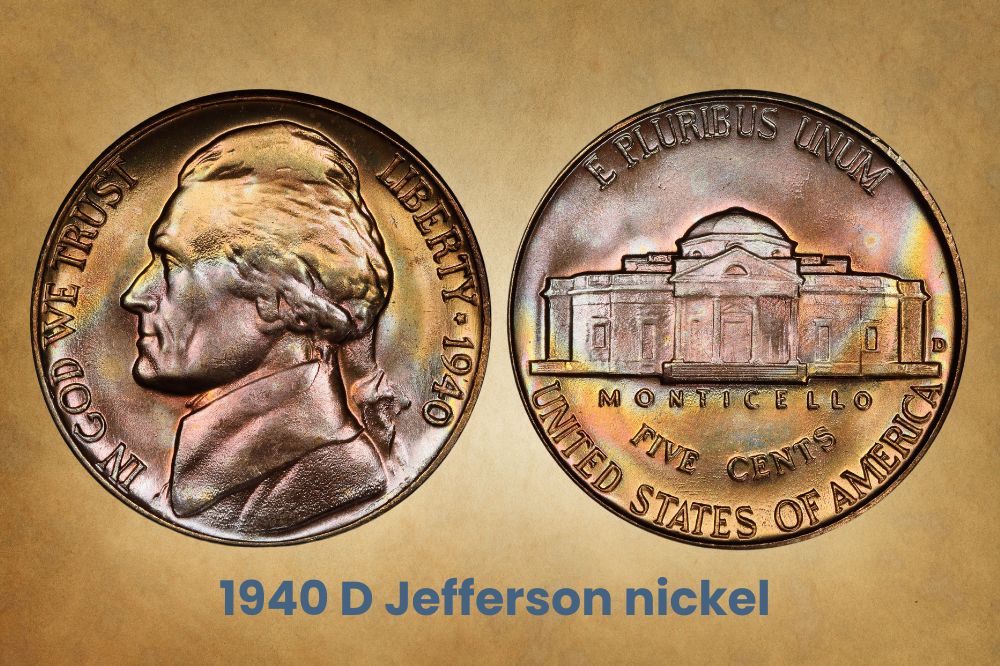
The Denver mint produced just over 43,500,000 Jefferson nickels this year. You can distinguish these pieces from others by the D mark on the reverse, placed to the right of Monticello.
Their value varies, so you should set aside 11 to 25 cents for a coin in average condition. However, an uncirculated specimen typically costs $2 to $17.
Some pieces can reach significant sums at auctions. At Heritage Auctions 2018, one collector purchased the 1940 D Jefferson nickel with the MS 67 rating for $795.
1940 S nickel value
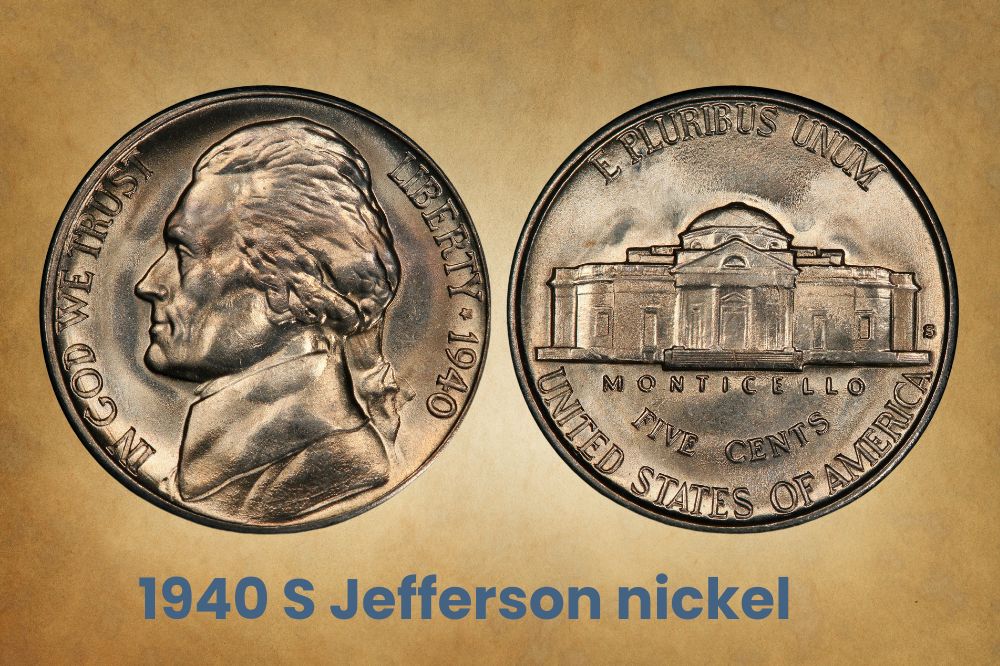
In 1940, the San Francisco mint produced 39,690,000 Jefferson nickels, the lowest mintage of that year. The quickest way to check whether the particular coin comes from this mint is to find the letter S on the reverse.
Nowadays, most of these nickels are in a worn state, which significantly affects their value. Circulating specimens’ prices range from 11 to 50 cents, while you need to set aside about $17 for an uncirculated coin.
The 1940 S Jefferson nickel in average condition won the auction record in 2000 at Heritage Auctions. One collector bought it for $1,840.
Related Posts: 17 Most Valuable Nickel Errors
1940 Nickel Errors
The average 1940 Jefferson nickel typically comes with a low price except for highly graded pieces. On the other hand, Full Steps varieties and some errors are always more expensive.
1940 Jefferson nickel Full Steps
The Full Steps is the designation used for nickels with five or six clearly visible steps at the base of Monticello. Due to their rarity, these pieces have exceptional value when they are in preserved condition.
1940 Jefferson nickel value |
|||
| Condition | 1940 FS No Mint mark nickel | 1940 S FS No Mint mark nickel | 1940 D FS No Mint mark nickel |
| MS 64 | $10 | $15 | $8 |
| MS 65 | $22 | $30 | $15 |
| MS 66 | $35 | $80 | $25 |
| MS 67 | $235 | $700 | $165 |
| MS 68 | $2,500 | / | $9,500 |
For instance, the 1940 D Jefferson nickel Full Steps in the MS 68 grade appeared at Legend Rare Coin Auction in 2018. One collector bought it for a whopping $21,738. On the other hand, the 1940 Jefferson nickel Full Steps graded MS 68 fetched a significantly higher sum. It was paid $6,463 at Heritage Auctions in 2016.
1940 proof Jefferson nickel reverse 1938
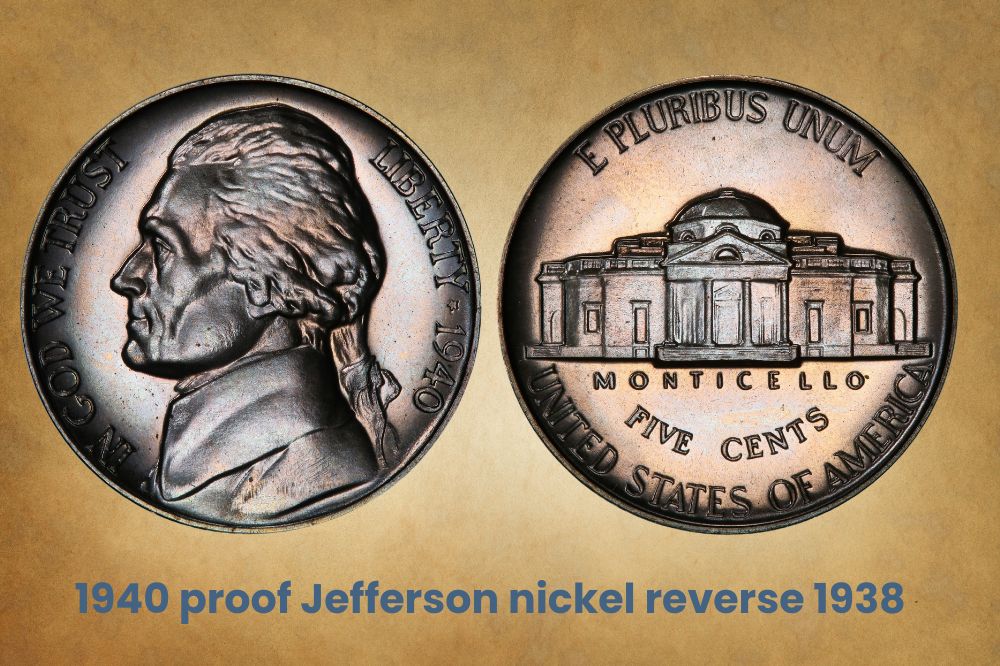
Interestingly, you can find nickel proofs struck in 1940 with two different reverses. The Philadelphia mint used the old 1938 die while minting a part of the overall mintage.
They are recognizable for the softer details on the reverse. Collectors like these nickels, and they can fetch staggering sums at auction. For instance, one 1940 proof Jefferson nickel with the reverse 1938 won an auction record in 2011. It was sold for a surprisingly high $28,750 at Heritage Auctions.
1940 Jefferson nickel with die cuds and cracks
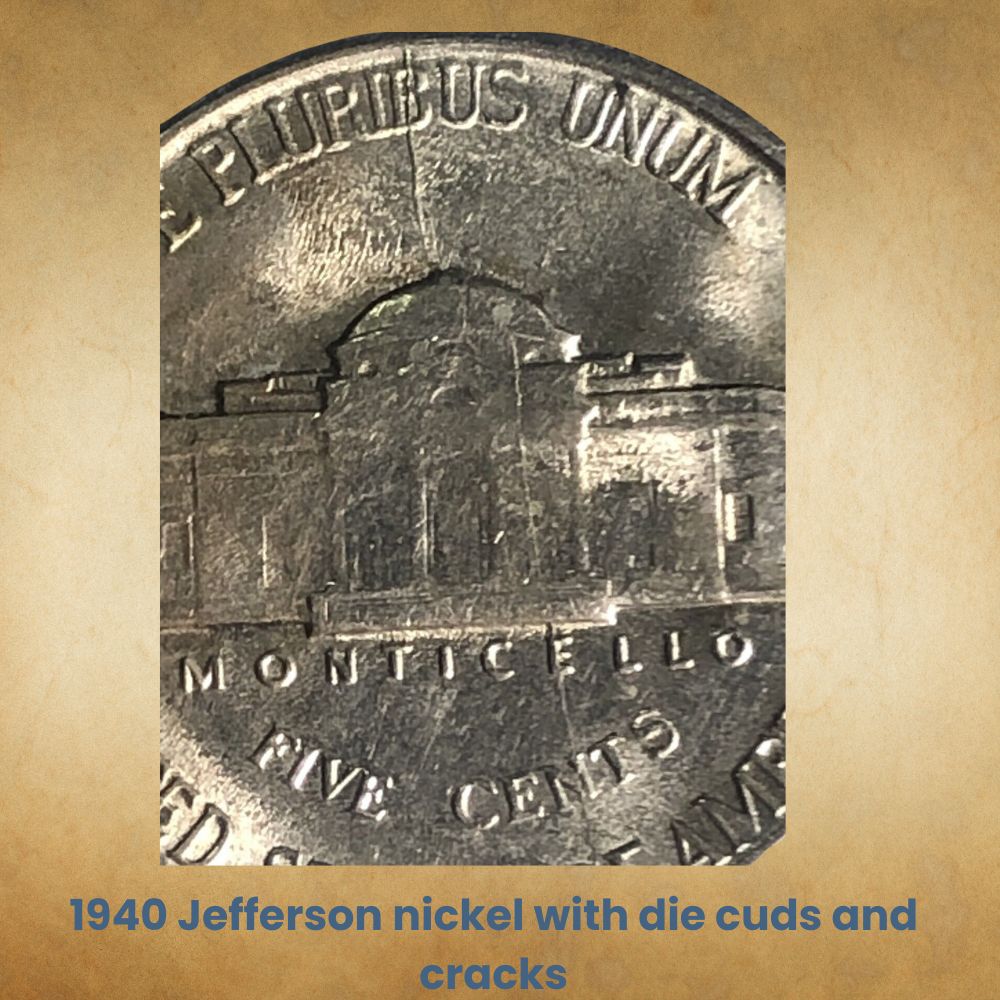
Sometimes, an old and frequently used matrix cracks near the rim, resulting in a coin flaw known as cuds. The 1940 Jefferson nickel with this error is worth $50 to $100. On the other hand, the appearance of cracks or raised anomalies on the coin surface also increases their value. You can get $10 to $50 for such a specimen.
1940 Jefferson nickel with off-center strikes
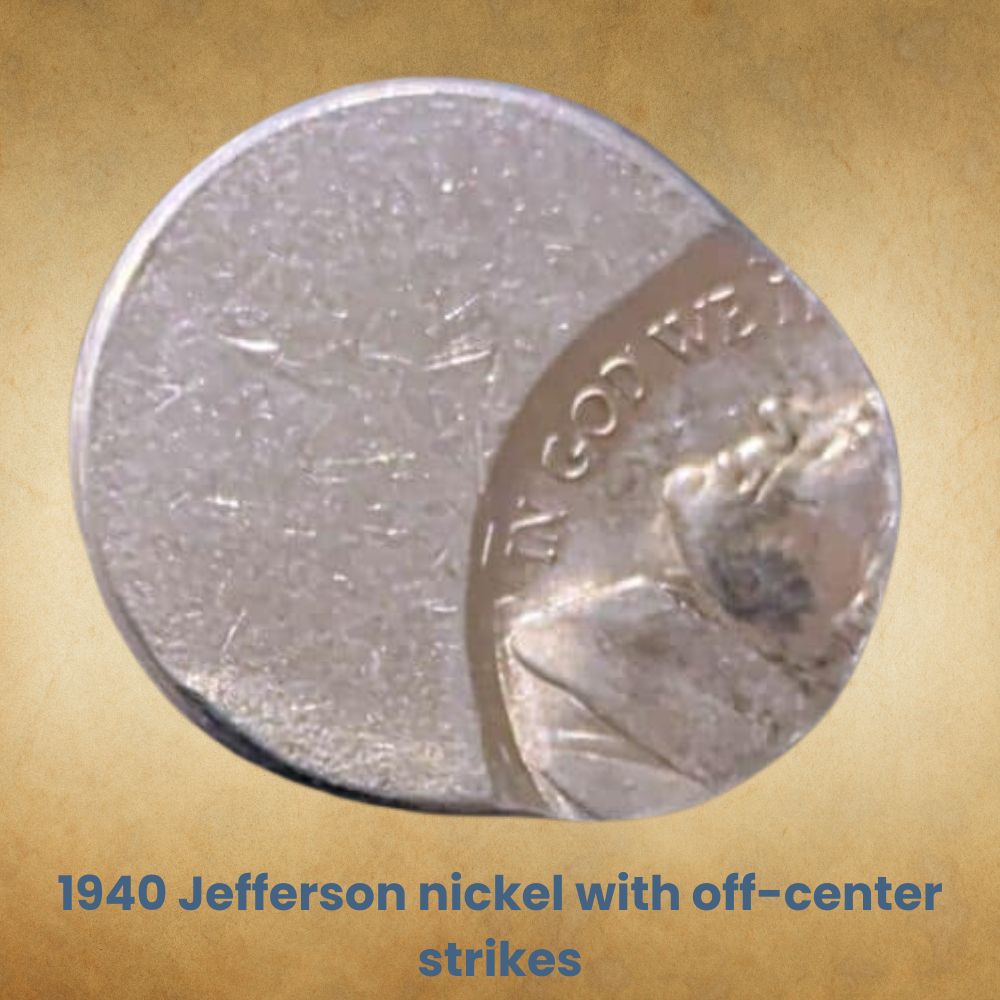
An off-center bump appearing on the nickel surface is the result of an incorrectly centered die. How far the punch is from the center determines the value of this coin error. The 1940 Jefferson nickel with a 5% to 10% off-set strike can fetch you $10 to $20, while a 50% off-center strike increases its value to $100.
Related Posts: 19 Most Valuable Nickel Worth Money
History of the 1940 Jefferson Nickel
In 1938, the conditions for the Buffalo nickel replacement appeared since the mandatory 25 years of minting had passed. The then-American President Franklin Roosevelt was a great admirer of Thomas Jefferson, so he initiated the production of coins in his honor.
Until that year, the US Mint’s chief engraver designed coins. However, a competition for the best nickel look was organized this time, and the prize for the winner was $1,000. All leading sculptors received an invitation letter to join the contest, and almost 400 competitors registered their participation.
The prize for the winning design went to the German emigrant sculptor Felix Schlag, who had become an American citizen shortly before that. Four weeks were enough for this artist to design the new nickel obverse based on Jefferson’s portrait by the painter Gilbert Stuart.
1940 Jefferson nickel |
||
| Location | Year | Minted |
| Philadelphia | 1940 No Mint mark nickel | 176,499,158 |
| Philadelphia | 1940 proof nickel | 14,158 |
| Denver | 1940 D nickel | 43,540,000 |
| San Francisco | 1940 S nickel | 39,690,000 |
| Total | / | 259,743,316 |
Thomas Jefferson’s mansion Monticello inspired the designer to create the reverse. The detailed depiction of a building resembling ancient Greek temples didn’t satisfy the commission at first.
The members insisted on a design revision, and the objections were related to the angle of Monticello shown. Also, they didn’t like the modern style of the inscription.
Since the commission expressed its objections, Felix Schlag adapted the design accordingly. He changed letters in the inscriptions and depicted Monticello from the front. After official approval in mid-September 1938, the first nickel with a new appearance was minted.
The nickel appearance hasn’t undergone any excessive changes over the years. However, the situation with the coin composition is entirely different.
During WWII, there was a nickel shortage due to the military industry’s needs, so Congress approved a change in the composition. In that period, these coins contained silver and copper instead of nickel.
Related Posts: 20 Most Valuable Buffalo Nickels Worth Money
how to identify 1940 Jefferson Nickel
The 1940 Jefferson nickel was in circulation for over 80 years, and many specimens are pretty worn nowadays. To be sure that the piece you have is indeed the 1940 nickel, it is desirable to know how it should look.
The obverse of the 1940 Jefferson nickel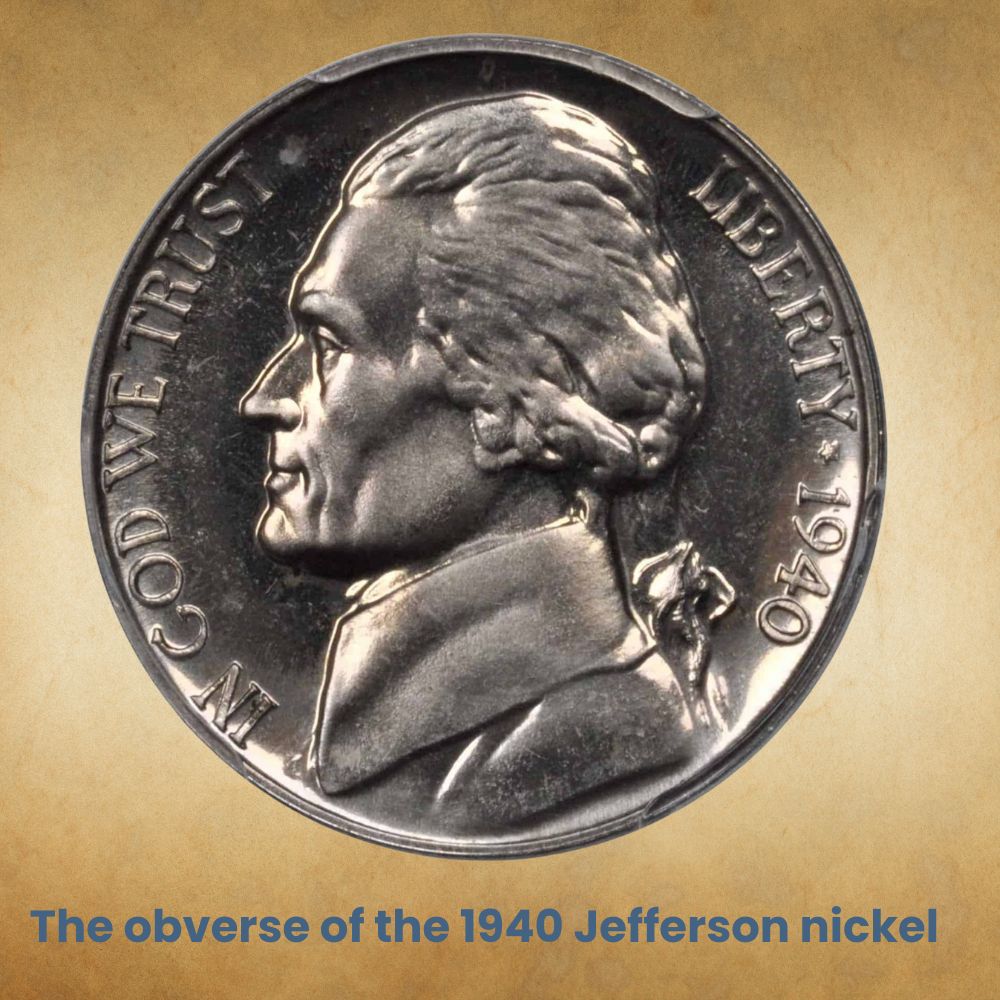
The Jefferson nickel’s obverse shows former President Thomas Jefferson’s profile facing left. It occupies the central part of the coin surface.
You can notice that Jefferson wears long hair tied in a ponytail, a typical hairstyle for that period. His coat details are clearly expressed, with a high collar according to that time’s fashion.
You can see the phrase IN GOD WE TRUST on the coin’s left rim in front of the profile. On the right side is the word LIBERTY with the minting year and a small five-pointed star between them.
The reverse of the 1940 Jefferson nickel
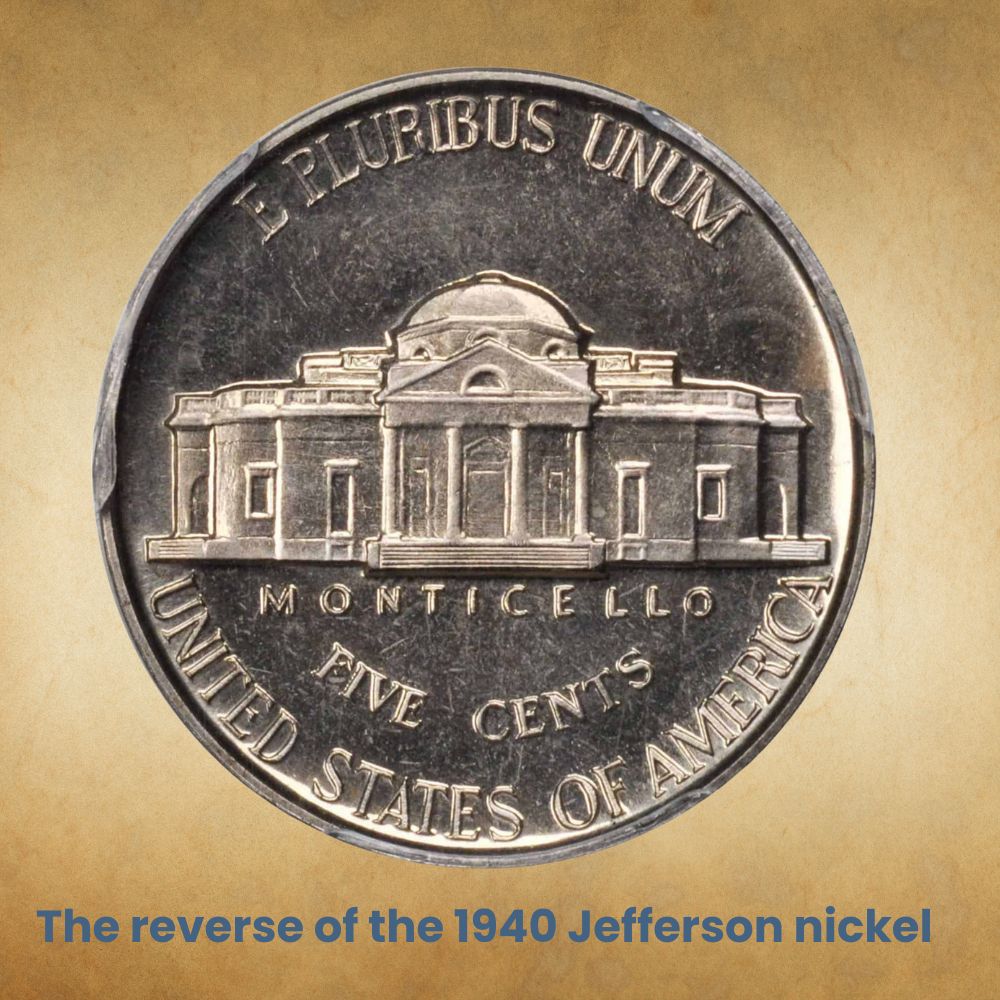
On the reverse is the front view of Jefferson’s mansion Monticello built by his own idea. It was well-known that he found inspiration in the Italian Renaissance, and even the name Monticello came from the Italian term meaning Small Mountain.
The monumental building occupies the reverse central part, with details such as the octagonal dome and steps to the porch. Above this dome on the upper rim is the Latin saying E PLURIBUS UNUM.
The inscription UNITED STATES OF AMERICA is along the lower rim, with the FIVE CENTS denomination above. Directly below the stairs, you can see the house name, MONTICELLO.
1940 Jefferson nickel |
|
| Face value | 5 cents ($0.05) |
| Edge | Plain |
| Shape | Round |
| Coin thickness | 0.07677 inches (1.95 mm) |
| Coin weight | 0.17637 ounces (5 g) |
| Coin diameter | 0.83465 inches (21.2 mm) |
| Compound | 75% copper and 25% nickel |
Other features of the 1940 Jefferson nickel
The 1940 Jefferson nickel is a round coin made of 75% copper, while the rest is nickel. This plain-edged piece weighs 0.17637 ounces (5 g), and its thickness is 0.07677 inches (1.95 mm). The coin comes with a diameter of 0.83465 inches (21.2 mm).
What makes a 1940 nickel rare?
The most collectible 1940 Jefferson nickels are rare Full Steps coins. According to PCGS and NGC, only coins with five or six steps can be in this category.
Which 1940 nickel is worth a lot of money?
- 1940 PR 68 Reverse of 1938 Jefferson nickel that was paid $28,750 at Heritage Auctions in 2011
- 1940 D MS 68 Full Steps Jefferson nickel that was paid $21,738 at Legend Rare Coin Auction in 2018
- 1940 PR Jefferson nickel with the 68 reverse of 1940 that was paid $18,400 at Heritage Auctions in 2005
- 1940 No Mint mark MS 68 Full Steps Jefferson nickel that was paid $6,463 at Heritage Auctions in 2016
- 1940 S MS 67 Full Steps Jefferson nickel that was paid $5,170 at Heritage Auctions in 2015
- 1940 S VG 10 Jefferson nickel that was paid $1,840 at Heritage Auctions in 2000
- 1940 PR 65 CAM Jefferson nickel with the reverse of 1940 that was paid $1,725 at Heritage Auctions in 2006
- 1940 D MS 67 Jefferson nickel that was paid $795 at Heritage Auctions in 2018
- 1940 No Mint mark MS 68 Jefferson nickel that was paid $558 at Legend Rare Coin Auctions in 2021
What is the 1940 No Mint mark Jefferson nickel average price?
The value of nickels produced in Philadelphia primarily depends on their preservation level. Due to the large number of used coins, you can find them for as little as seven cents.
However, their typical price ranges from 11 to 17 cents, while you can buy a piece in a better condition for approximately 35 cents. In most cases, proof coins have a higher value, so you need to spend at least $140 to buy one.
What is the rarest 1940 Jefferson nickel?
According to PCSG data, the rarest is the 1940 S/S Jefferson nickel in the MS 66 grade because only 13 of these coins still exist. Collectors know that there is one copy with MS 66+, but it is not available for public sale.
